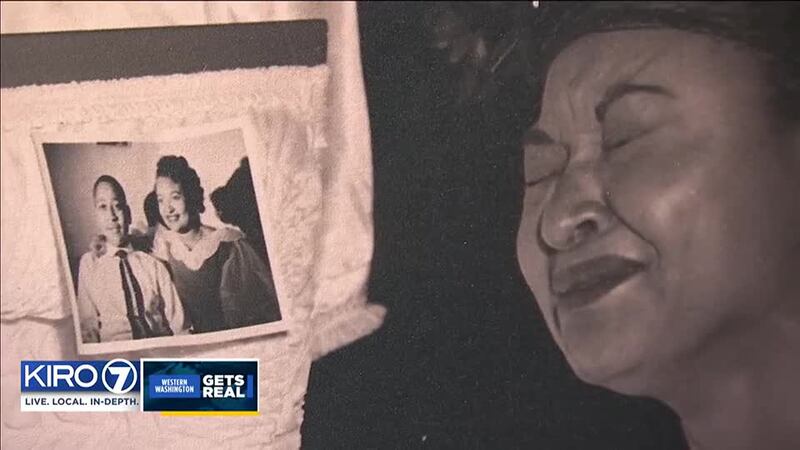SEATTLE — A new exhibit at the Northwest African American Museum has an unusual age restriction. You must be at least 10 and accompanied by an adult to see it. The exhibit? The short life and brutal death of a teenager named Emmett Till.
The 1955 murder of 14-year-old Emmett Till by two white men is often considered the catalyst for the modern Civil Rights movement. Till, accused of whistling at a white woman, was shot to death, his mutilated body later found in the Tallahatchie River in the Mississippi Delta.
KIRO 7 was given a tour of this provocative new exhibit making its first West Coast stop.
“It does start with him growing up, telling the story of him growing up in Chicago,” said Brandon Bird, the Northwest African American Museum’s interim executive director. “And then kind of transitions to his mother’s account, of giving him the talk.”
For those of a certain age, the story of the black teenager from Chicago who innocently gets caught up in the vicious, deadly racism of his family’s native Mississippi; well, that story is pretty familiar.
But in 1955, Emmett Till was just fourteen, and his violent death at the hands of two white men for allegedly whistling at the wife of one of them, that story still has the power to devastate.
So the exhibit has an age restriction, to children at least 10 years old.
“Emmett Till’s story is heavy and serious in content,” explained Bird. “We absolutely believe it’s worth sharing with today’s youth. We just also recommend that youth are accompanied by adults so that throughout the experience of the exhibit, there’s an adult that’s able to help them process certain portions of the story that the exhibit shares and ask all of us to ponder.”
When asked how we understand that talk, Bird said, “Just the fear that comes with one parent having to share with their child the potential hate and violence they could experience.”
Indeed, the violent conclusion to Till’s life might have been lost to history if not for what Bird calls the courageous acts of a grieving mother. One of those acts was Mamie Till-Mobley’s decision to allow for an open casket for her son’s funeral.
“And by doing so, it shocked a nation,” Bird said, “on being able to witness the senseless brutality and quite frankly evilness that was inflicted upon her son. And through that connection from one human being to another, again, it helped fuel others to make courageous decisions such as Rosa Parks, who articulated why she’s sitting on the bus.”
What is most interesting about the exhibit is that some people will come and feel like I did. “I know that story. I’ve seen that before.”
But then right over here, something I’ve never seen, something that for me was brand new. “That is actually ... one of the signs that was installed,” said Bird, pointing to an Emmett Till sign erected in Mississippi. “And as you can see shot with many bullets.”
Bird says the exhibit reveals a through line, evident nearly seven decades later.
“We must still remain persistent,” said Bird, “committed and feel continued responsibility to advance social equity from where it’s at today to where it needs to be tomorrow.”
©2024 Cox Media Group








